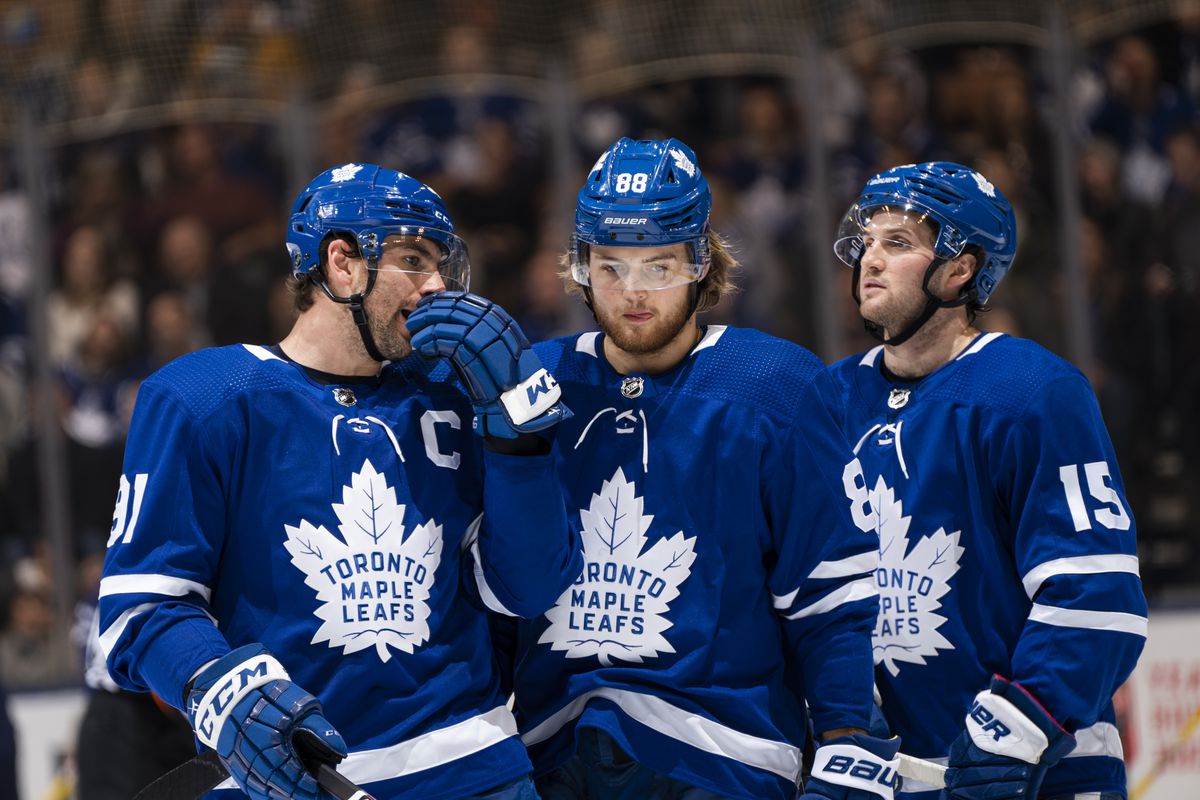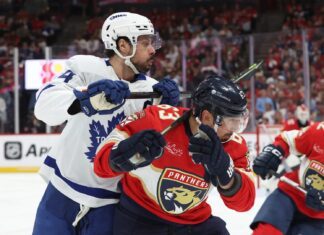On Episode 1 of the MLHS podcast, Ian Tulloch and Anthony Petrielli introduce the new segment, “Overreaction or Underreaction,” and weigh up William Nylander’s often-scrutinized defensive play.
Support the MLHS Podcast on Patreon
Early-release full-length video episodes are available to our patrons each week:
Petrielli: First one to you, Ian: Are we overreacting or underreacting to William Nylander’s defensive play?
Tulloch: We overreact to everything William Nylander-related in this market. William Nylander could sneeze, and we would probably overreact to it. There is a lot of microanalysis.
I think Nylander is what he was a couple of years ago and is what he is now in terms of being an elite transition player with the puck on his stick. He picks the puck up in the defensive zone, and he gets you an exit and an entry automatically. There are not many players in the league who are as confident with the puck on their stick as he is.
He is way better in neutral-zone defense than we tend to give him credit for. He is among the leaders in neutral-zone takeaways per 60 every year. But you are going to bring up some defensive issues that I can understand why people get frustrated with him for. You probably think we are under-reacting to it.
Petrielli: I do think we are under-reacting. I will say why. This should honestly be the bottom line, and I really hope I can articulate this in a way that is understandable.
The Leafs don’t give Nylander a ton of ice time. He is almost always playing under the 17-minute mark. The only reason he came in over that in the last game was because he started in overtime. The reason he doesn’t play as much as his talent suggests that he should is because they don’t trust him defensively. You might not like it if I point something out with him, but the Leafs don’t trust him defensively.
They often look to shelter him. They have been looking to start him in the offensive zone as much as they can. To some degree, it is a little bit of an indictment of his play. He is going to score. He is a good player. You can’t argue otherwise. But for $7 million, it would be a little nicer if they could trust him in some defensive situations.
They never let him touch the ice in the final two minutes of a one-goal lead they’re protecting.
Tulloch: You can see that in the graphs I like to pull up on player deployment on high-leverage situations offensively and defensively. High-leverage offensively, they are definitely using him. He is an elite offensive player and an elite transition player as well.
Defense is one of those things where, if you are looking at shots and chances against, Nylander shows well in those metrics. His team tends to have the puck when he is on the ice.
You are probably thinking of specific examples on backchecks, or the example against Leon Draisaitl a few weeks ago. What are you specifically referring to? Because the coaches clearly see it, too, if they are not playing him late in games where they are holding a lead. What is he doing wrong?
Petrielli: A really good example came up when Johnny Gaudreau scored against the Leafs at even strength. There was a puck that bounced to the top of the circle, and Nylander and Monahan. It was a quick play. Nylander tried to one-hand the puck by Sean Monahan, who is a good player. I am not going to say he is elite or anything, but he is a good player — he’s solid. He is not the kind of guy that you are going to try to skate and one-handed poke the puck around for a 3-on-2 the other way.
I get what he is trying to do, but of course, it didn’t work. Monahan shot the puck on net, and Gaudreau put the rebound in. That kind of started the Calgary comeback after that really good first period the Leafs had — probably their best period of the season so far.
There are all sorts of bad habits there. He doesn’t put his body on the play. He doesn’t use two hands on his stick. He doesn’t stop on the puck.
I pointed out the Draisaitl thing. It’s a very simple example. It is not a subjective opinion at this point. It is just objective. Matthews is out for that game. The Leafs start one of their other big forwards for once. Nylander doesn’t put his body on him, and Draisaitl goes by.
Tulloch: Is Nylander ever going to be a guy who puts his body on a guy just based on his play style and everything we have seen over the last few years? I don’t know that we can expect him to be a physical presence despite the fact that he is a lot stronger than people realize.
Petrielli: I think so, too. I think he needs to have a bit more sense of occasion. I don’t expect him to put his body on guys, but in those kinds of situations, you have to identify and know when you are on the ice that it’s Sean Monahan and Johnny Gaudreau. You need to be sure. Or Leon Draisaitl. There are certain players where you have to know it is the other team’s really good players and you can’t be as soft on them as others.
I know that he is high on the team in takeaways and all of that — none of that is lost on me — but he is often doing it playing against third lines. The Leafs know it, so they shelter him.
I would just like to see a little bit more out of him because I would like him to be playing 18 minutes a night. I am sure the Leafs would, too, but they don’t trust him.
Tulloch: I just want to let you know that he leads Toronto forwards in shot share. The Leafs have the puck when he is on the ice. He is getting it into the offensive zone.
Petrielli: Where does he rank on the team in offensive zone starts?
Tulloch: We know that offensive zone starts don’t impact your five-on-five results to the degree that people think they do. People think that if you get a few offensive-zone starts, you should be dominating every metric. That is not how it works.
Petrielli: Of course not. But it does play into it. His shifts are always tilted.
Tulloch: It does, but you start something like 60% of your shifts on the fly. Most players are starting their shifts on the fly.
I always get frustrated when people bring up zone starts. “He starts a few shifts in the defensive zone, so it makes sense he is getting completely killed in the scoring chance and shots department.” That is usually just a way of explaining away bad results.
Petrielli: I think there is a mushy middle area. If you are starting a ton, it is going to impact your numbers. He is leaning towards the other side. If you are starting a ton in the offensive zone, he is shading to that side of things. It is going to impact his numbers. And if he is going to play against weaker players — which he generally is — he should be running them over.
I guess the bigger problem would be: You have a problem with the coaching staff because they obviously don’t trust him, either.
Tulloch: I think Anthony is over-reacting to William Nylander’s defense.















![John Gruden after the Leafs prospects’ 4-1 win over Montreal: “[Vyacheslav Peksa] looked really comfortable in the net… We wouldn’t have won without him” John Gruden, head coach of the Toronto Marlies](https://mapleleafshotstove.com/wp-content/uploads/2025/09/gruden-post-game-sep-14-218x150.jpg)


















